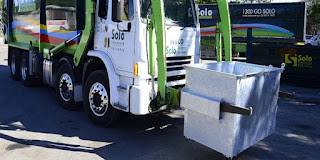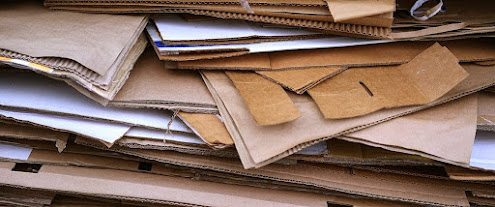Hazardous waste and e-waste recycling makes a lot economic and environmental sense to businesses and individuals in Adelaide
Technology is getting more and more integrated into our everyday lives which has enabled the use of wearable gadgets, smart TVs, smart homes, intelligent bathrooms, and more. Sensors in these devices can be connected through the internet, making streaming of content possible. At the same time, the lifespan of electronic gadgets and devices is getting shorter, and many products are simply thrown away as batteries have died, or the user wants a new replacement with upgraded features. Price war and mass consumption of products have made it possible for companies to launch new products at a lower price, so more products are consumed. All this has led to increased consumption and increased amounts of e-waste and hazardous waste as electronic waste usually also contains toxic and hazardous waste.
Electronic waste or e-waste is
generated from electronic devices that have reached their end-of-life usability
and are discarded. These include home appliances like mobile phones, air
conditioners, air conditioners, computers, microwaves, circuit boards,
batteries, monitors, video game systems, and more. Electrical and electronic
equipment (EEE) cover a wider range of products and are among the largest
contributors to electronic waste. E-waste recycling is one of the most talked
about issues in Australia and all over the world, due to its potential to have
a harmful impact on the environment. Electronic devices are made of a complex
mix of rare and useful materials like gold, platinum, lithium, cobalt, and
more. According to the Environmental Protection Agency (EPA), one metric tonne
of circuit boards can contain 40 to 800 times the amount of gold, and 30 to 40
times the amount of copper mined one tone of core. As such, e-waste recycling
Adelaide, and efficient hazardous
waste disposal Adelaide makes a lot of sense for the manufacturers and the
environment.
Providing raw material for
re-use
As more people are using
electronic devices, manufacturers are facing a shortage of raw materials.
Extracting virgin raw material from inside the earth is a very expensive and
time-consuming process. As such, e-waste recycling Adelaide makes a lot of
economic and environmental sense. Proper e-waste recycling usually involves
disassembling the electronics, separating and categorizing the materials used
in it, and cleaning. Items are then shredded mechanically. Separated and sorted
electronic waste products undergo further separation and extraction process, to
extract copper, aluminum, glass, and other precious metals, like gold,
palladium, and silver. The extracted metals are cleaned and further purified,
which then can be used as raw material for manufacturing new products.
Recycling electronic waste not
only prevents toxic substances from entering our bodies and contaminating the
environment but also reduces the pressure on extracting raw material. Adelaide E Waste
and Recycling Centre (AWRC) makes use of the latest technologies and
processes to recycle electronic waste, and boost the circular economy by
putting back the raw material for use in the manufacturing of new devices. The
company has the right equipment and trained staff that perform e-waste
recycling Adelaide. This Adelaide’s leading waste management company is one of
the city’s four Community Chemical and Plant Drop-off Centres, which accepts
batteries, chemicals, coolants, plant materials, paint materials, and
more.
Hazardous waste treatment and
disposal
If you are facing challenges with
your hazardous waste disposal, Adelaide Waste and Recycling Centre uses
chemical, thermal, biological, and physical methods, as appropriate. Chemical
methods include ion-exchange precipitation and oxidation-reduction methods.
Thermal methods used for hazardous waste disposal Adelaide include the use of
high-temperature incinerators that can detoxify certain organic wastes, and
also destroy them. Special types of thermal equipment are used for this
purpose, which include fluidized-bed incinerator, multiple-hearth furnaces, and
rotary kilns. Biological treatment of certain types of hazardous waste is
also an option. In this method of hazardous waste disposal Adelaide, the waste
is carefully mixed with surface soil on a suitable tract of land, and nutrients
and microbes are added. In case microbes are used to metabolize hazardous waste
on previously contaminated sites, the process is known as bio remediation.
The crew dealing with hazardous
waste disposal Adelaide come equipped with protective gear. The hazardous
waste, such as solvent-based paints, cleaning and polishing chemicals, and
pharmaceuticals are transported in specialised trucks with warning labels. In
some case, hazardous waste that cannot be treated for useful purposes may be
disposed of in a landfill that consists of two impermeable liners and also
includes leachate collection systems. An impermeable cap or cover is placed
over a finished landfill to reduce the amount of leachate. For liquid hazardous
waste, a deep well injection technique may be used in which hazardous liquid
waste is pressure-forced into the pores and fissures of rocks. This
cost-effective method requires little or no pre-treatment of the waste.
.jpg)




Comments
Post a Comment